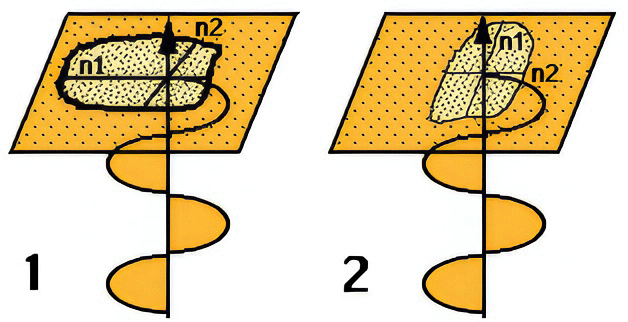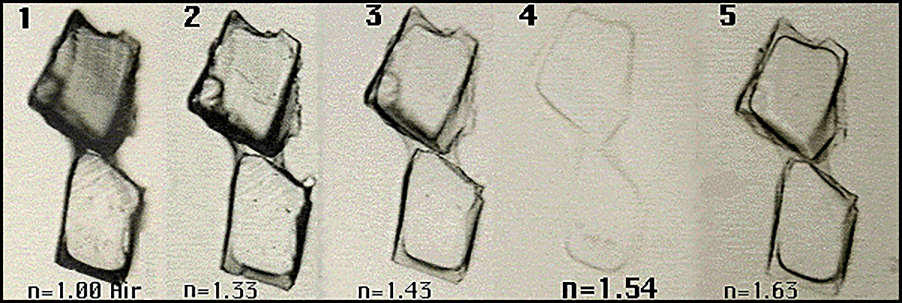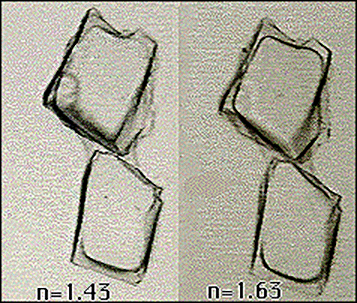
Relief can also vary within the same grain
When a ray of polarised light crosses a crystal, the refractive index which acts corresponds to the direction of vibration.
Let us consider a crystal under the microscope. In case (1), the light waves arrive from the polariser vibrating in accordance with one of the two directions of vibration of the mineral. For these waves, the vibration index of the crystal would be n1. If we turn the stage round 90º (case 2), the waves now would be propagated according to the other index, n2. If this crystal is very anisotropic and n1 is very different from n2, the relief will change according to whether one or the other is acting.

The refractive index of all anisotropic minerals varies continuously (between a maximun value and a minimun value) depending on the vibration direction of the light within the crystal. The maximun possible difference in refractive indices of a mineral is called the birefringence.
If the immersion medium is changed, the relief will also change
When a mineral is immersed in liquids with a different refractive index, its relief will change even if it remains in the same position.

The following video shows two quartz grains (n=1.54) submerged in a highly volatile liquid (n=1.63). When the liquid evaporates, the grains become surrounded by air (n=1.00) and their relief changes intensely.
This means that the value of its refractive index can be determined when it has the same directions of vibration as the polariser, as this value will be the same as that of the immersion medium in which the relief is neutral or nil (4).
Relief = difference in indices
The degree of relief is proportional to the difference, in absolute value, between the refractive indices of the mediums under consideration.
In the figure, one same mineral (with a refractive index
of 1.54) is shown immersed in two oils with different indices (n=1.43 and
n=1.63). The mineral has the same relief in the two mediums with different
indices, one higher and the other lower, as in both cases the absolute difference
between the indices is similar (1.54-1.43 = 0.11 and 1.54-1.63 = 0.09).
